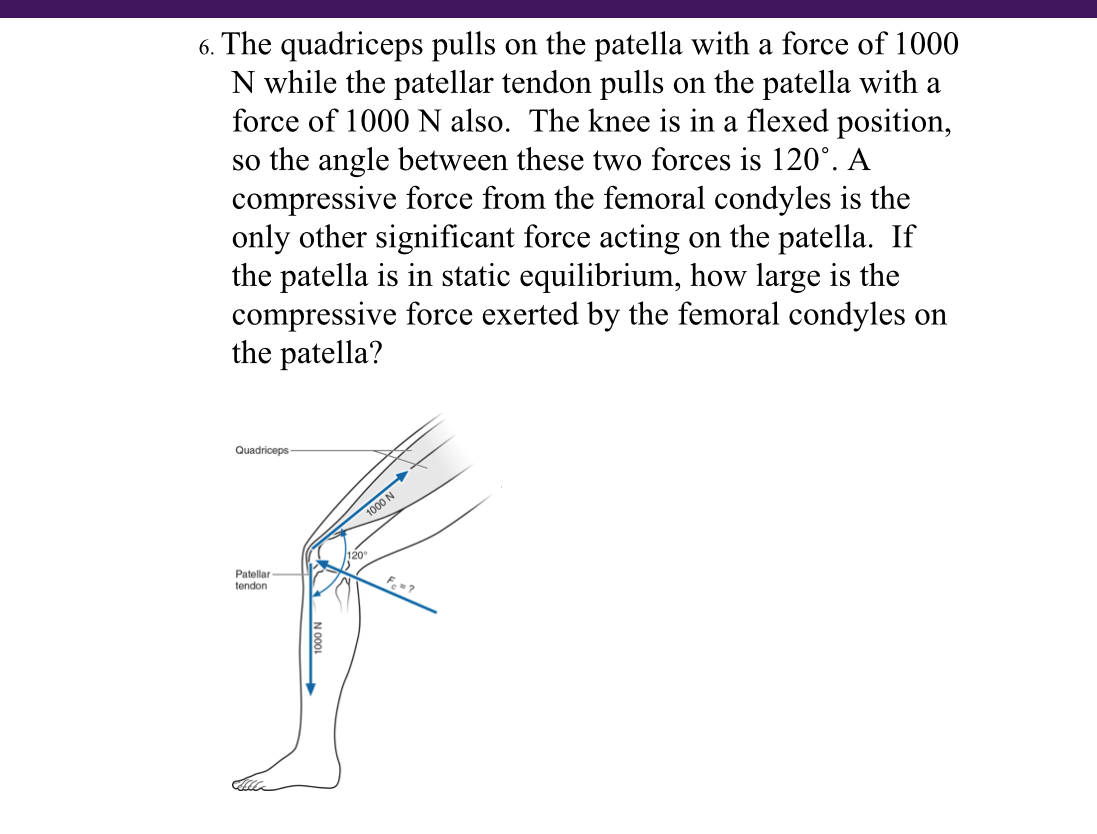6. The quadriceps pulls on the patella with a force of 1000 N while the patellar tendon pulls on the patella with a force of 1000 N also. The knee is in a flexed position, so the angle between these two forces is 120°. A compressive force from the femoral condyles is the only other significant force acting on the patella. If the patella is in static equilibrium, how large is the compressive force exerted by the femoral condyles on the patella? Quadriceps 120 Patellar tendon Fe=? V0001
6. The quadriceps pulls on the patella with a force of 1000 N while the patellar tendon pulls on the patella with a force of 1000 N also. The knee is in a flexed position, so the angle between these two forces is 120°. A compressive force from the femoral condyles is the only other significant force acting on the patella. If the patella is in static equilibrium, how large is the compressive force exerted by the femoral condyles on the patella? Quadriceps 120 Patellar tendon Fe=? V0001
Related questions
Question

Transcribed Image Text:6. The quadriceps pulls on the patella with a force of 1000
N while the patellar tendon pulls on the patella with a
force of 1000 N also. The knee is in a flexed position,
so the angle between these two forces is 120°. A
compressive force from the femoral condyles is the
only other significant force acting on the patella. If
the patella is in static equilibrium, how large is the
compressive force exerted by the femoral condyles on
the patella?
Quadriceps
120
Patellar
tendon
Fe=?
V0001
Expert Solution
This question has been solved!
Explore an expertly crafted, step-by-step solution for a thorough understanding of key concepts.
This is a popular solution!
Trending now
This is a popular solution!
Step by step
Solved in 2 steps with 2 images
